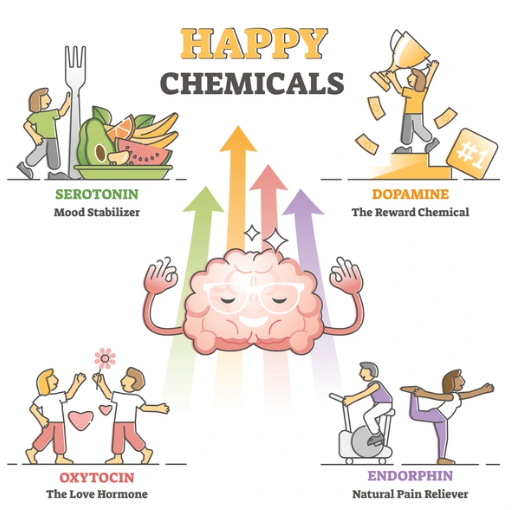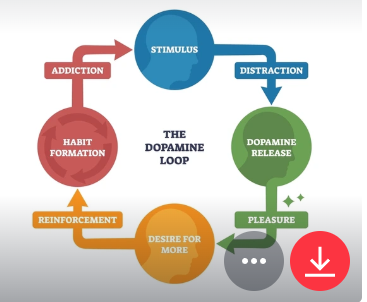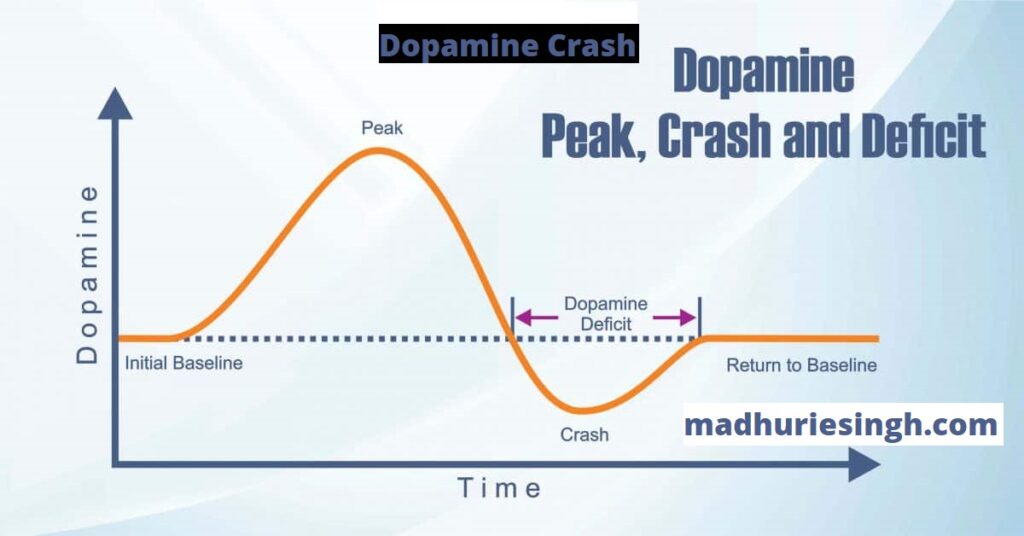How To Apply For School Transfer Certificate, TC ?
Why Screen Time Issue Happens - Dopamine Reward Cycle
By Madhurie Singh, July 03, 2025

Introduction To Dopamine
Listen to the brief introduction about Dopamine Reward Cycle
There is one chemical in our brain that makes us feel good — it’s called dopamine.
Nature gave us dopamine so that when we found food, clothes, shelter or love, we felt happy and wanted to do it again. Why? Because it helped humans survive, long, long ago.
But today? We are not in caves anymore. Life is full of comforts. And screens, internet, social media — these have now become our new ‘reward’ triggers.
Every time we scroll, watch a fun video, or hear a ping on the phone, the brain releases dopamine. And the more this happens, the more we crave it.
In fact, top experts like Dr. Anna Lembke (author of Dopamine Nation) say — in modern life, we are all at risk of becoming addicted to screens and the internet. Even without knowing it!

The Step-by-Step Process: How Dopamine Works
1️⃣ Your child sees a screen (phone, tablet, TV)
👉 The brain says: “This looks fun!”
2️⃣ The child clicks/watches something exciting (game, cartoon, video)
👉 The brain releases dopamine, a “feel-good” chemical.
3️⃣ The child feels happy — “Wow! That felt nice.”
👉 The brain remembers: “Do this again!”
4️⃣ The child repeats the action — watches more, plays more.
👉 More dopamine comes.
👉 The brain starts building a new habit.
5️⃣ Over time, the brain begins to CRAVES this feeling.
👉 Now the child may ask for the screen even when:
✅ Bored
✅ Tired
✅ Upset
✅ Alone
Because the brain has linked the screen = happiness.
6️⃣ The more the child uses the screen, the harder it becomes to stop.
👉 Other activities (reading, outdoor play) feel “boring” in comparison.
👉 The brain wants more and more screen time for the same dopamine hit.
7️⃣ Without limits, this cycle becomes addiction.
👉 The child throws tantrums when the screen is removed.
👉 Mood, sleep, and attention — all get affected.
👉 Parent-child battles begin.

What Chemical Changes Are Happening Inside the Brain?
I wanted to share what I’ve learned from real people and brain science about how habits—like scrolling screens or overeating—can slowly take control of us. When we do something that feels good (like watching fun videos, eating sweets, or shopping online), the brain releases a chemical called dopamine. This is the brain’s way of saying, “I like this! Do it again!”. Which I have already described in steps.
But here’s the tricky part: if you keep doing the same thing too often, your brain tries to balance itself. It lowers the dopamine, not just to normal, but even lower than normal. This creates a shortage of pleasure, or what experts call a dopamine-deficient state. So now, you feel dull, bored, or low unless you keep going back to that thing, like more screens, more sugar, or more shopping.
That’s how everyday habits can silently turn into something your brain craves but doesn’t enjoy as much anymore. This is the real reason for addiction.
Here’s a visual graph showing how dopamine levels in the brain spike during screen use and then drop, not just back to normal, but often below the baseline. This helps explain why, over time, your child may feel dull or irritated without screens: their brain is craving more dopamine just to feel “normal.”

How To Get Over The Dopamine Reward Cycle?
🌿 HERE’S THE GOOD NEWS:
- The brain can also “unlearn” this habit.
- With simple daily steps (you will learn in this course), you can break this cycle.
- Your child can become calm, happy and balanced again — without screens ruling the mind.
🛠️ What Can Indian Parents Do?
Join The Trusted Parents Whatsapp Group Here
Fill The Google Form To Connect With Madhurie Singh or Join the Trusted Parents Circle
Join The Screen De-Addiction Course Here
✍️ About the Author
Madhurie Singh is India’s leading education and parenting expert, a school reviewer, computer engineer, Sanskrit scholar, and founder of Trusted Parents. Through ancient wisdom and modern science, she helps parents raise mindful, values-driven children in a digital-first world.






Login is required
Don't have an account? Sign Up